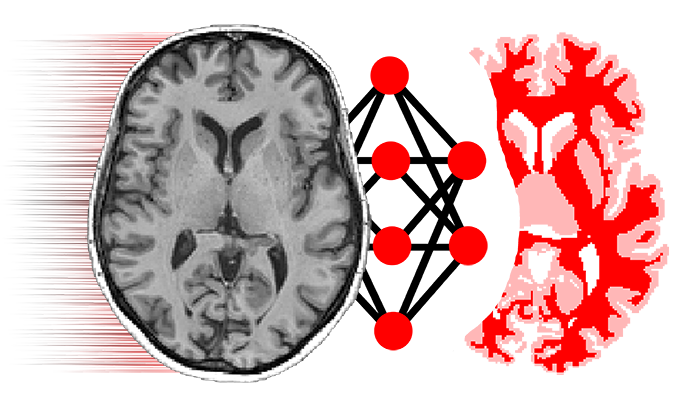niftynet.io.image_reader module¶
This module loads images from csv files and outputs numpy arrays.
-
infer_tf_dtypes(image_array)[source]¶ Choosing a suitable tf dtype based on the dtype of input numpy array.
-
class
ImageReader(names)[source]¶ Bases:
niftynet.layer.base_layer.LayerFor a concrete example:
_input_sources define multiple modality mappings, e.g., _input_sources {'image': ('T1', 'T2'), 'label': ('manual_map',)}
means:
‘image’ consists of two components, formed by concatenating ‘T1’ and ‘T2’ input source images. ‘label’ consists of one component, loading from ‘manual_map’
Parameters: - self._names – a tuple of the output names of this reader.
('image', 'labels') - self._shapes – the shapes after combining input sources
{'image': (192, 160, 192, 1, 2), 'label': (192, 160, 192, 1, 1)} - self._dtypes – store the dictionary of tensorflow shapes
{'image': tf.float32, 'label': tf.float32} - self.output_list –
a list of dictionaries, with each item:
{'image': <niftynet.io.image_type.SpatialImage4D object>,
’label’: <niftynet.io.image_type.SpatialImage3D object>}
-
initialise(data_param, task_param, file_list)[source]¶ task_paramspecifies how to combine user input modalities. e.g., for multimodal segmentation ‘image’ corresponds to multiple modality sections, ‘label’ corresponds to one modality sectionThis function converts elements of
file_listinto dictionaries of image objects, and save them toself.output_list.
-
prepare_preprocessors()[source]¶ Some preprocessors requires an initial step to initialise data dependent internal parameters.
This function find these preprocessors and run the initialisations.
-
add_preprocessing_layers(layers)[source]¶ Adding a
niftynet.layeror a list of layers as preprocessing steps.
-
layer_op(idx=None, shuffle=True)[source]¶ this layer returns dictionaries:
keys: self.output_fields values: image volume array
-
shapes¶ Image shapes before any preprocessing.
Returns: tuple of integers as image shape Caution
To have fast access, the spatial dimensions are not accurate
- only read from the first image in list
- not considering effects of random augmentation layers
- but time and modality dimensions should be correct
-
tf_dtypes¶ Infer input data dtypes in TF (using the first image in the file list).
-
input_sources¶ returns mapping of input keywords and input sections e.g., input_sources:
{'image': ('T1', 'T2'), 'label': ('manual_map',)}
map task parameter keywords
imageandlabelto section namesT1,T2, andmanual_maprespectively.
-
names¶ return – the keys of
self.input_sourcesdictionary
- self._names – a tuple of the output names of this reader.
